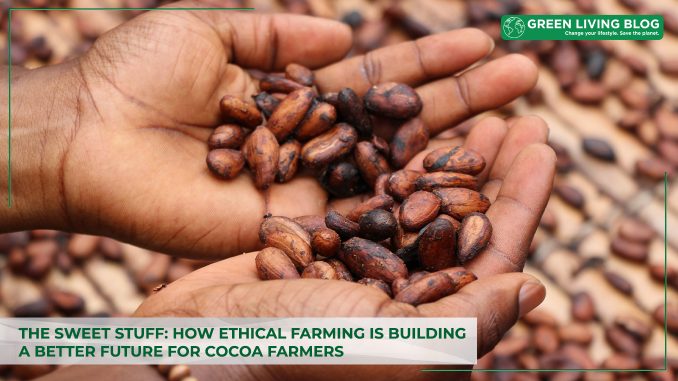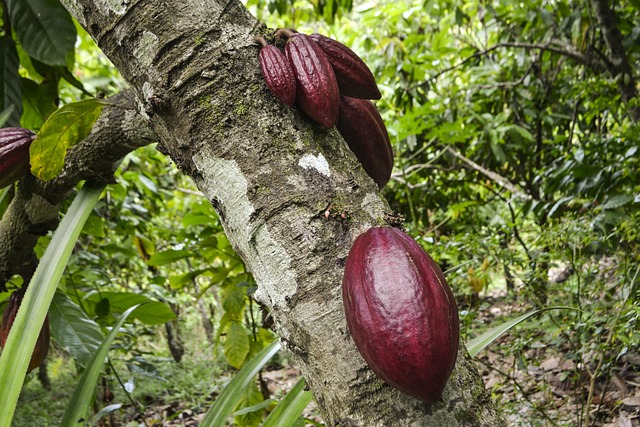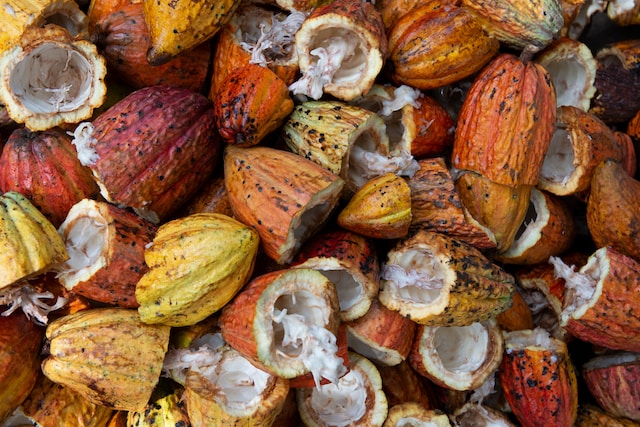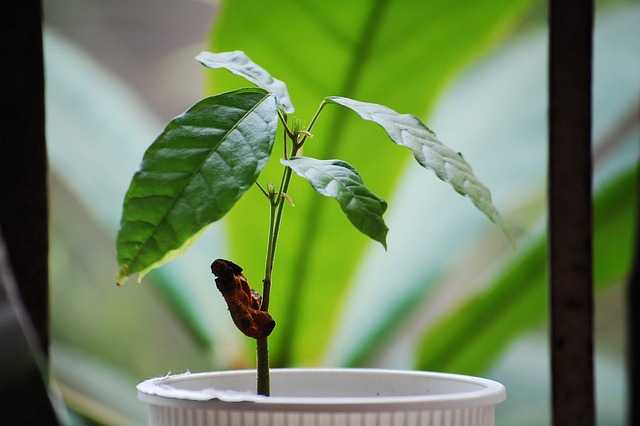
What’s the real price of your favourite chocolate bar?
As we indulge in our much-loved treat, cacao-producing countries struggle with a complex web of environmental, social, and political issues.
So, instead of telling growers what they need to do differently, should ethical and sustainable farming practices look at tackling the entire supply chain?
That’s the approach several leading chocolate producers and NGOs in the sector are taking.
And while there’s no quick fix, chocolatiers increasingly support sustainable farming methods to produce ethical chocolate.

The cacao conundrum
It takes up to 120 beans and 1,700 litres of water to make 100 grams of chocolate. Yet this resource-hungry crop produces, on average, just forty cacao pods per tree. Or just enough for two kilograms of chocolate annually.
Factor in the productive lifespan of a cacao tree – around twenty years – and you begin to understand the dilemma facing many struggling cacao farmers. Cacao is a vital cash crop for West African farmers. Still, deforestation and soil degeneration threaten biodiversity and rural communities across the region.
When cacao trees can’t be replaced, or a farmer can no longer afford fertiliser and pesticides, or the ground can no longer support cultivation, it’s often cheaper to start again. Since 2000, over 37% of the Ivory Coast’s protected rainforest has been lost to cacao plantations. And an estimated 17% of cacao is produced illegally.
The cacao conundrum is forcing chocolatiers to rethink sustainability and ways they can produce ethical chocolate.
Sustainable farming for sustainable chocolate
So, how does the chocolate industry support sustainability across the supply chain? In the Philippines, farmers are encouraged to optimise the value of their land by planting cacao in the shade of coconut trees. Cacao pulp is used to sweeten whole bean bars, and the pod husks are used for everything from animal feed to fertiliser. Cacao nibs, the intensely chocolatey bean meat that remains after fermentation and drying, have found their home in the confectionery industry.
But sustainability is about more than the bean itself. And creating sustainable chocolate is part of a broader system of education and empowerment. Better-educated farmers make more intelligent and greener decisions about the future of their industry.
Forward-thinking chocolatiers like Hotel Chocolat are paving the way for ethical chocolate production. Initiatives like Ghana’s ‘Gentle Farming’ take a holistic approach to sustainability. A reforestation, biodiversity, and education program support farmers who are already paid above the market rate for their cacao. It’s a scheme that the Living Income Foundation says could be a blueprint for future ethical cacao production.

What about ethical farming practices?
But sustainability is only one part of the equation. Can cacao farming also be ethical, given the exploitative practices so many farmers face?
Reports of environmental and human rights abuses were once rampant in the cacao industry. Many farmers in West Africa, where most of the world’s cacao is grown, were subsisting on less than $1 a day. Since 2000, the World Cocoa Foundation, a consortium of processors and producers, has worked towards the eradication of child labour and the empowerment of women in the industry.
The scale of the problem is immense – an estimated 2.1 million children, some as young as five, work on West African cacao farms. In addition, poor farmers and their families are at risk of being trafficked into back-breaking labour with the promise of a better life.
The Living Income Fund aims to challenge exploitative practices and ensure farmers and their families can invest in their future. Backed by the Rainforest Alliance, the Fund directly connects chocolate companies and farmers, using cash transfers to boost their annual incomes by 11%. As a result, farmers can plan for emergencies and educate the next generation.
What’s the future of sustainable and ethical chocolate farming?
The World Cocoa Foundation works towards a sustainable future for the industry by empowering communities and farmers to work with the planet and protect rainforests. Increasingly, climate change presents a threat to cacao production. Cacao trees can’t grow when it’s too hot. So, efforts are being made to incorporate agroforestry into cultivation to increase the health and biodiversity of cacao farms.
Moving away from a mono-crop approach has proved successful across Africa. Planting sweet potatoes, avocados, and mangoes alongside cocoa trees has multiple benefits, including supplying desperately needed shade that allows the cacao crop to flourish. This diverse approach will also enable farmers to feed themselves and retain more of their income.
In Madagascar and Latin America, producers are making premium payments to community development funds. These projects are controlled by farmers’ co-operatives, who then make joint democratic decisions on how the funds are spent.
In Saint Lucia, the Rabot Estate has evolved into a model cacao farm with a new, fairer approach. Here, farmers are paid for the whole crop directly, without the intervention of middlemen taking their cut. The freshness of the beans ensures a premium price. In return, growers benefit from technical support and top-quality seedlings at a discount.
Meanwhile, in Ghana, the Green Tropics Group is helping growers manage and conserve precious resources to support sustainable farming practices. The Osuben River Basin Natural Resource Management Project has already set up wells that support cacao seedling nurseries and provide clean water for local communities.

The sweet spot: creating ethical and sustainable chocolate bars
Fortunately for cocoa farmers, ethical chocolate is a valuable commodity, with the Fairtrade market projected to be worth US$34,137.23m by 2027. Consumers can’t get enough of ethical chocolate that is sustainably farmed, making it the fastest-growing sector in the industry.
Ethical chocolate is a journey. It’s an industry that faces complex challenges and new threats from climate change. And issues of child labour and forced labour across the supply chain remain.
The chocolate industry is one where oversight can be difficult. Yet investment in empowering and educating whole communities is beginning to yield long-lasting results. And with the support of industry-leading chocolate producers, the destination for 100% ethical chocolate may yet be in sight.
![]()
Author Profile
- Online Media & PR Strategist
- Blogger and Educator by Passion | Senior Online Media & PR Strategist at ClickDo Ltd. | Fascinated to Write Lifestyle Blogs in News & Education I have completed a journalism summer course at the London School of Journalism and manage various blogs.
Latest entries
 LeisureApril 16, 202510 Best Green UK Hotels for Eco-Tourists
LeisureApril 16, 202510 Best Green UK Hotels for Eco-Tourists Best practicesApril 14, 20258 Best Ways to Reduce Your Carbon Footprint
Best practicesApril 14, 20258 Best Ways to Reduce Your Carbon Footprint Green Expert GuidesMarch 28, 2025Lisbon Living: Where Sustainable Charm Meets Urban Energy
Green Expert GuidesMarch 28, 2025Lisbon Living: Where Sustainable Charm Meets Urban Energy EnvironmentJanuary 21, 2025Buying Eco-Friendly Homes: 6 Eco Questions to Ask Your Real Estate Agent
EnvironmentJanuary 21, 2025Buying Eco-Friendly Homes: 6 Eco Questions to Ask Your Real Estate Agent






Leave a Reply
You must be logged in to post a comment.